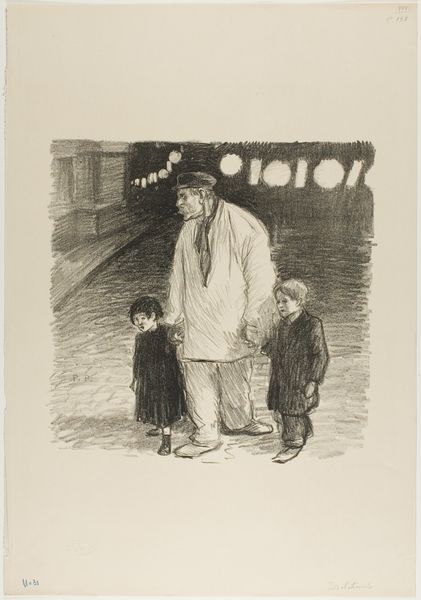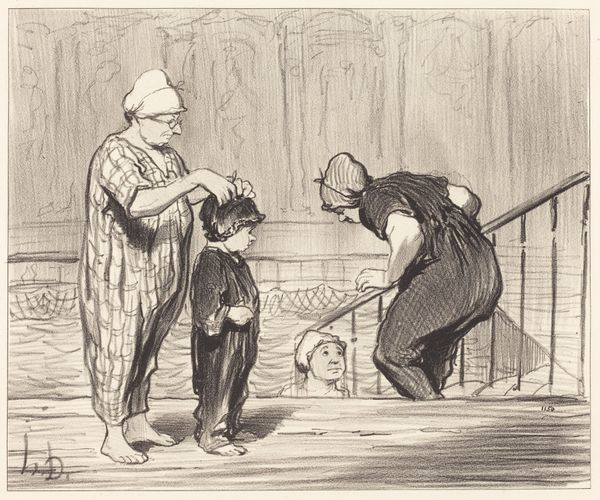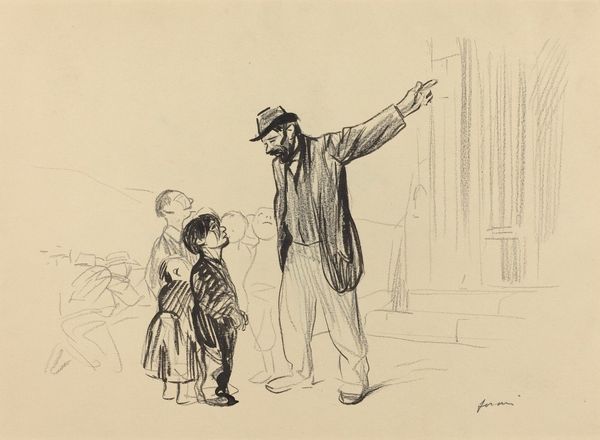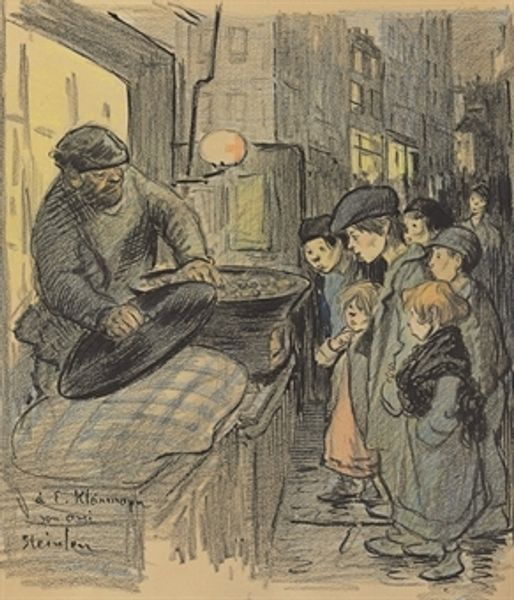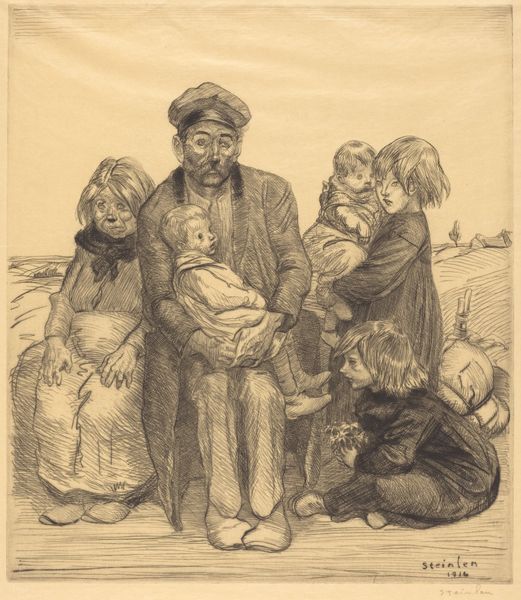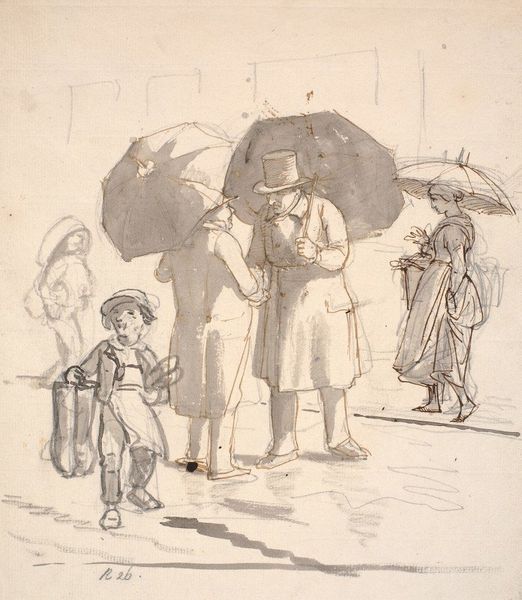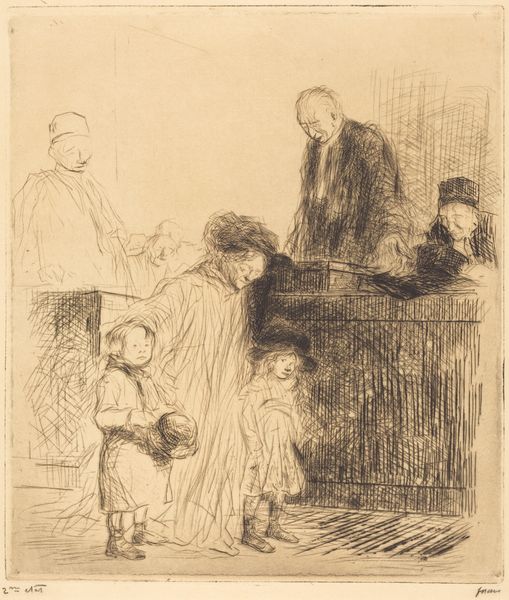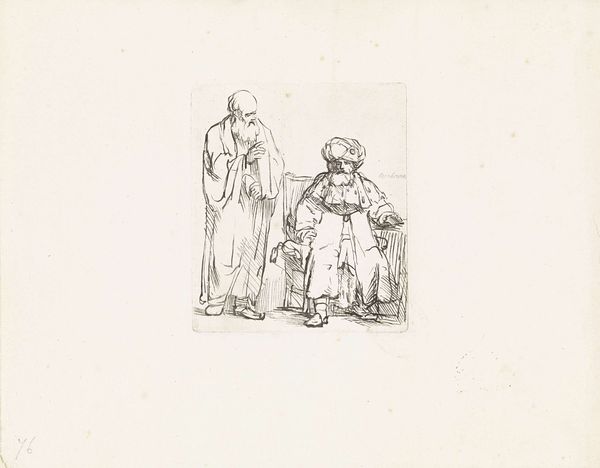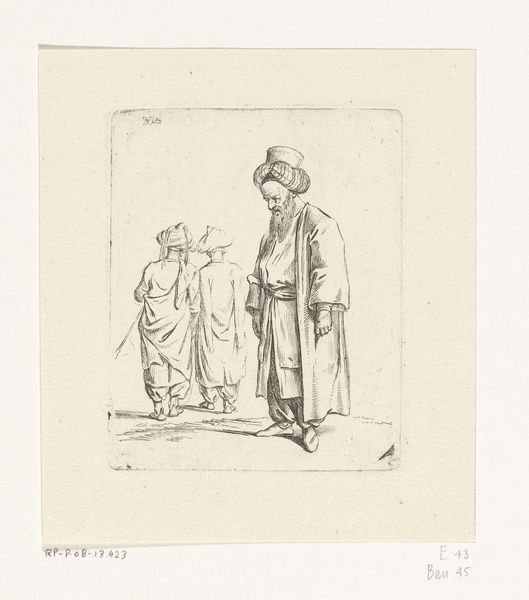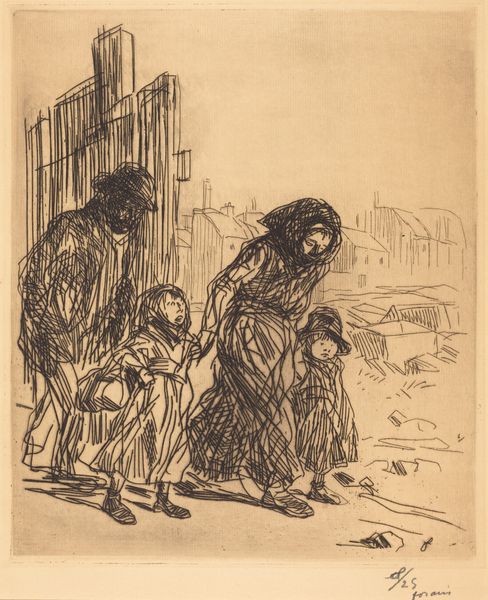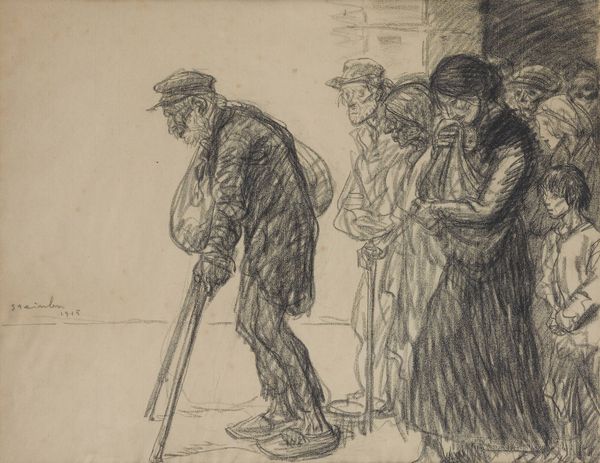
Copyright: Public domain
Curator: Théophile Alexandre Steinlen's "Fete Nationale," created in 1894, is a lithograph, showcasing an intimate, urban scene rendered with pen and pencil. Editor: It’s immediately striking – a poignant sketch, almost monochromatic. The soft colors are strategically placed, mostly around the lights in the background. There's a stillness about it. Curator: Yes, and considering the period, that muted palette speaks volumes about the lives being depicted, suggesting perhaps, an industrial pallor, a weariness, as much as it echoes the artistic preferences towards impressionism. The figure of the old man almost seems monumental next to those little children. Editor: Absolutely. I'm struck by the figures: an elder gentleman, probably a father or a grandfather, escorting what seem to be young working-class children. Their weary postures hint at larger narratives concerning the rights, safety, and childhood within rapidly changing 19th-century France. Are they coming home from some sort of gathering? Curator: "Fete Nationale," so National Day...The composition subtly plays into established symbolist notions, too. This could point to a melancholic irony – do the celebrations uplift everyone? Look closer – the figures seem somber, lost. The image almost has a voyeuristic quality to it. It could have been a slice-of-life scene, but the heavy use of light and dark creates a more universal representation of urban family life. Editor: I agree completely about the irony. Knowing that this piece coincides with a period of immense social upheaval—anarchist movements and labor struggles were on the rise at this time—adds another layer. It certainly makes you think who exactly benefits from this national celebration and at what cost. The elder’s tired gaze, the children’s plain clothes…it’s not exactly a scene of celebratory excess, is it? Curator: No, far from it. It reminds us how art, even seemingly simple drawings, can be a powerful vehicle for asking important questions about society, about who we include, and who we overlook. Steinlen's subtle work offers lasting visual continuity for how power continues to be structured to this day. Editor: Definitely. For me, this work makes clear that to experience something, such as national pride or shared history, depends significantly on who you are, your class, your race, and the socioeconomic realities you inhabit. It serves as a reminder of the ongoing need for equal experiences across communities.
Comments
No comments
Be the first to comment and join the conversation on the ultimate creative platform.
